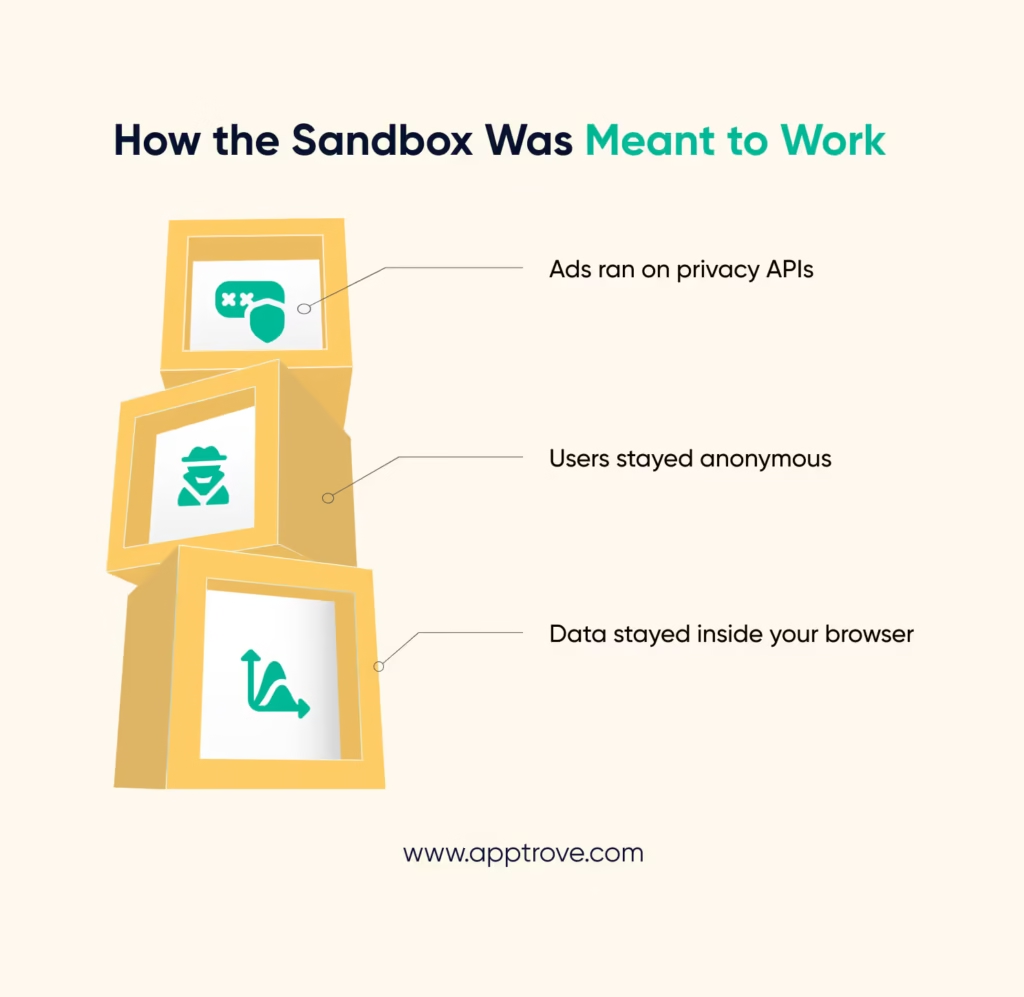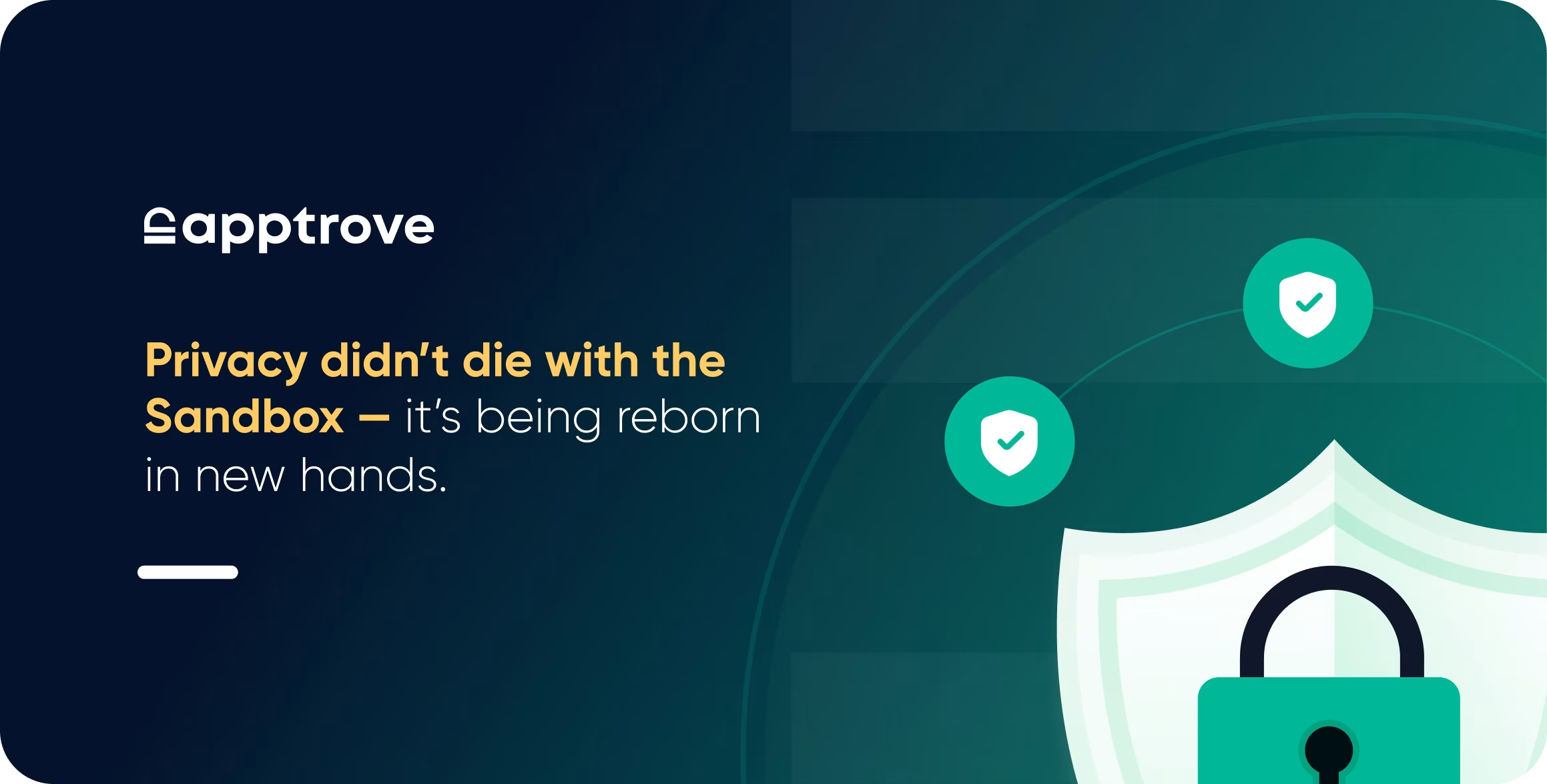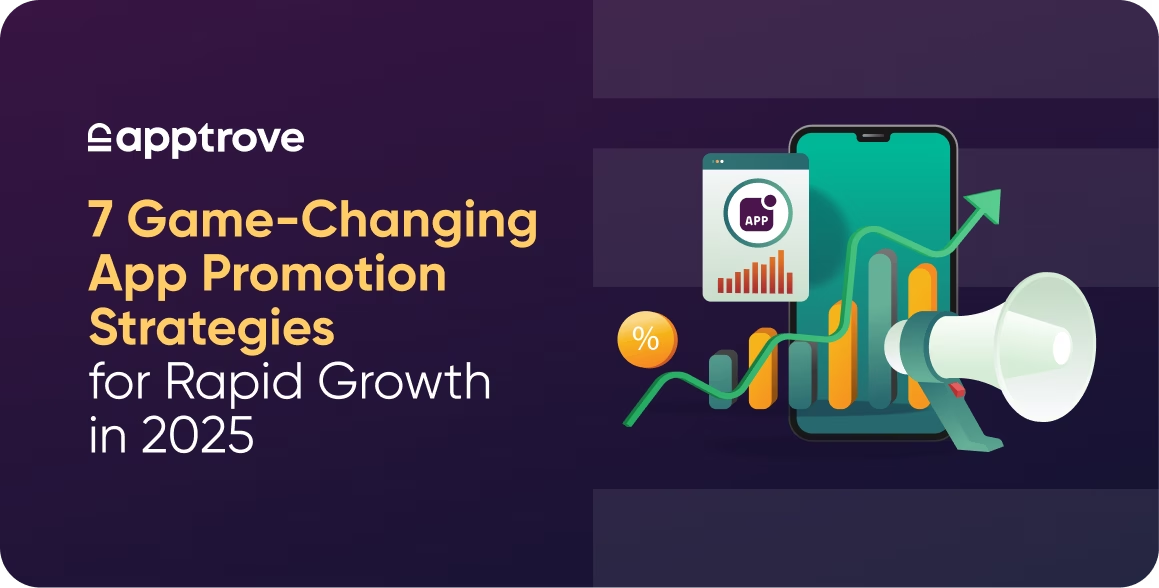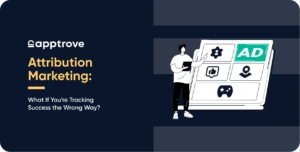At the time Google first introduced the Privacy Sandbox, they felt that it was the dawn of a new era- a new era where the marketer could reach the consumer without tracking or following them around the web. It was supposed to be the innovation that would re-architecturize the way that data, consent, and ads might exist, the brash experiment that would balance personalization and privacy. Gradually the promise of the Sandbox started cracking. Difficult implementation, low transparency and the changing privacy regulation put its prescriptive quality into doubt. Now in the dropdown of Google Privacy Sandbox, it gives us the answer to the question: what would a really private web environment look like? At Apptrove, we have been tracking this development – helping marketers like you to read privacy first measurement in a world not within the Sandbox.
What was the Google Privacy Sandbox and why It Mattered

Essentially, Google Privacy Sandbox was a radical move by Google to restructure the internet advertisement industry without third-party cookies. It had a very basic but disruptive intent, to enable marketers to measure, target, and optimize advertisements without collecting identifiable user data. Rather than monitor users across sites, Sandbox suggested a range of privacy-first APIs, which would examine behavior within the browser.
This sandbox environment was a kind of fenced testing environment – the browser would store the sensitive information on-site, just providing information of trends, which were not person-specific, only aggregated. It was the reaction of Google to the fact that society had a growing need for privacy on the Internet that led the legislation on data protection becoming more stringent, and that the trend towards the personal web experience is running.
To advertisers, the Sandbox was an embodiment of hope, a glimpse into the future in which both the lack of transparency and performance could coexist. To the users it was the lack of being tracked all the time. In a way, it was an experiment that demonstrated how the tech industry has been fighting continuously to create an appropriate balance between personalization and privacy, and a major milestone in the history of ethical data measurement.
The Causes of the Failure of the Sandbox – Scale Expectations Not Met
The Google Privacy Sandbox project had a big vision but was faced with even greater issues with the implementation. Theoretically, the Sandbox was aimed at substituting third-party cookies with privacy-first tools; practically, it was challenged greatly. The main difficulty was the implementation of the transition: the introduction of new APIs, control of the data and data flows within the sandbox application system, and synchronization of the versions of compatible browsers and new systems within ad-tech. These changes were too complex and time consuming to be processed by many marketers and developers even in the event that it had been easier. It was just too cumbersome for many of them. Marketers even lamented that there was no visibility to the data and transformation between an identifier onto the sandbox app was difficult.
One of the impediments was the absence of transparency. Performance implications sought by marketers are known and in action. The Python sandbox environment occasionally (frequently) provided results that were not actionable – such as anonymous aggregate data – what marketers were trained on! Moreover, the scales were not effectively supported by the assistance of neighboring or other popular browsers. Besides being of low demand, one neutral report said that smaller ad-tech companies merely lacked the engineering power or financial resources to successfully construct operational Privacy Sandbox frameworks (one ad-tech CEO told Reuters). The Sandbox never actually went off the Demo track. The existence of mere drawbacks was exaggerated.
Meanwhile, the broader privacy landscape was rapidly evolving. Users and browsers demanded greater openness and control—simplified opt-out systems, improved consent flows, and fewer opaque tracking mechanisms. This pressure was reflected across the industry: in the 2025 Marketing Data Report by Supermetrics, 66% of marketers expressed concern about tracking users across channels, 57% expected less effective targeted advertising, and only 16% reported using zero-party data. Such figures illustrate a market still struggling to adapt to privacy-first advertising models, despite strong awareness of their necessity.
Concisely, privacy-friendly advertising had been promised a consolidated sandbox environment based on valid friction with regard to real-world developments to counter technological, operational, and ecosystem limitations. And according to you, as a marketer in this private experience, it implies that the question of what comes next is now more than ever.
Consequences of Its Demise for Advertisers and the Private Internet
For years, advertisers turned to the Google Privacy Sandbox as a possible indicator of how marketers could continue to engage in performance-based marketing on the private web and the future of a cookie-less and privacy-safe internet. However, the Sandbox’s demise represents something far more significant: the ending of the browser-based privacy model. The web as we knew it — one built around cookies and third-party identifiers — is being transitioned to a new landscape in which privacy is ensured through a smarter, on-device intelligence paradigm and transparent, consent-based data sharing.
For mobile marketers and app developers, this poses complex and transformative challenges. Without the Sandbox, relying on user level data gives way to a model where privacy is designed. Rather than taking data from the user, data now resides and learns on-device — signifying the transition to privacy being considered as architecture, rather than a feature. You will likely see a heavier emphasis on frameworks like SKAN for iOS, which enables (albeit limited) post-install measurement without tracking the user, and pending equivalents on Android reflecting the same ethos of privacy-by-default.
However, for marketers like you, this transition is about much more than technology, it’s about reevaluating how we build trust and measure growth ethically. There is no longer the concept of “data by default” — our users now expect value, transparency, and respect for their digital walls. Those who embrace and adapt to these changes first will develop deeper, more sustainable relationships with their audiences.
So at the end of the day, the end of the Google Privacy Sandbox will not mark the end of digital measurement — it marks the beginning. The private web will continue to evolve, and those who prioritize respect, consent, and context will be building it.
Insights from the Collapse of Google’s Privacy Sandbox
The fall of Google Privacy Sandbox symbolizes more than just closure—there are valuable lessons for how we think about measurement, privacy, and growth in the years ahead. For one, you learn that privacy can’t be a half-measure. As ambitious as the sandbox was, privacy required a complete pull from all parties in the ecosystem to browsers, marketers, the ad-tech stack, developers, and regulators. If one link in that chain faltered, the whole structure weakened.
Secondly, you come to the realisation that transparency, consent and trust should not merely be treated as legal criteria – they need to be embraced as the pillars of your strategy. It is not sufficient to simply state, “We’re compliant.” Users are looking for clarity on how data is collected, analysed, and respected. UNCTAD research shows that around 79% of countries have legislation around data protection and privacy, capturing how laws and consumer preferences shape an increasingly interconnected world through digital platforms.
Finally, the Privacy Sandbox is not a classic story of failure, but rather one of evolution. The Sandbox may not have scaled in the manner intended yet it changed the thought process. You are now working in a world of the private web, where data minimisation and on-device intelligence matter, and you are a marketer cultivating that experience. The Sandbox was a lesson in recognising that privacy and growth don’t have to be at odds; they can be allies.
What’s Next — Building for a Privacy-First Future

As the marketing industry matures, each major shift in the meaning of “timeliness” leaves two types of marketers—those who wait for clarity and those who build clarity into their strategy. The end of the impacts of the Google Privacy Sandbox no longer being “upending” is your sign to be a builder. The private web is evolving rapidly, enabled by smarter attribution systems, consent-based user journeys, and deep data models that keep privacy front and center (rather than on the sideline).
Measuring is no longer synonymous with intrusion, thanks to frameworks such as SKANNative analytics. You can glean relevant insights, making room for people to share their information – we call that the ethical/data=CX equation. Similarly, a transparent consent model gives people control over how their information is used and establishes a clear pathway to trustworthiness. This is the kind of privacy-first growth mindset we will see in the next generation of digital marketers.
The primary consideration to get there is readiness. The sooner you pivot – your attribution, consent model, and reporting to accommodate a privacy-first framework – the more powerful your competitive advantage becomes. Rather than positioning a privacy-first approach as a compromise, consider this more like a design principle. It is the foundation for both credibility and creativity in everything we do digitally.
The death of Google’s Privacy Sandbox is not the end of privacy first innovations. It is the beginning of a new era, where ethical data, measurement intelligence, and transparency are the basis for sustainable marketing practices.
Final Analysis – The Sandbox Has Disappeared, But Privacy Is Here to Stay
The shuttering of the Google Privacy Sandbox symbolizes what has been a sobering wake-up call for an entire industry to confront the ethical implications of data collection, and the meaning of trust when it comes to users and their data. Privacy is no longer a footnote, it is the basis for everything we do. For marketers, developers, and brands, the time is now to brand privacy not as a hindrance, but as a value-add to what we write, data transparency, measurement, and engagement. The private web is here to stay, and how you operate in it will be the basis for your future relevance.
At Apptrove, we will continue to work with marketers to help you work through all the changes that are shaping a private, transparent, and measurable mobile ecosystem – one insight at a time. Contact us to start your journey with us.






